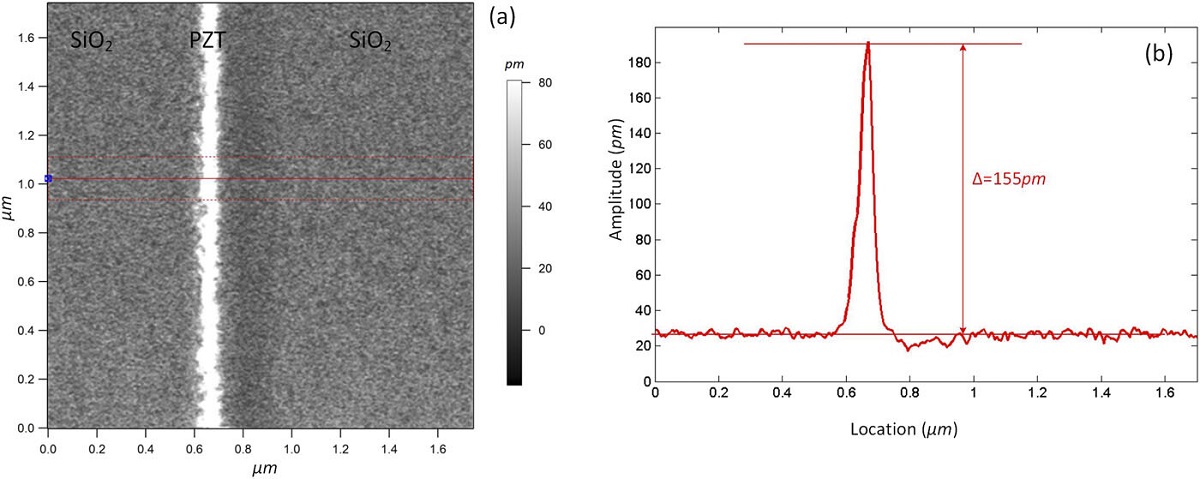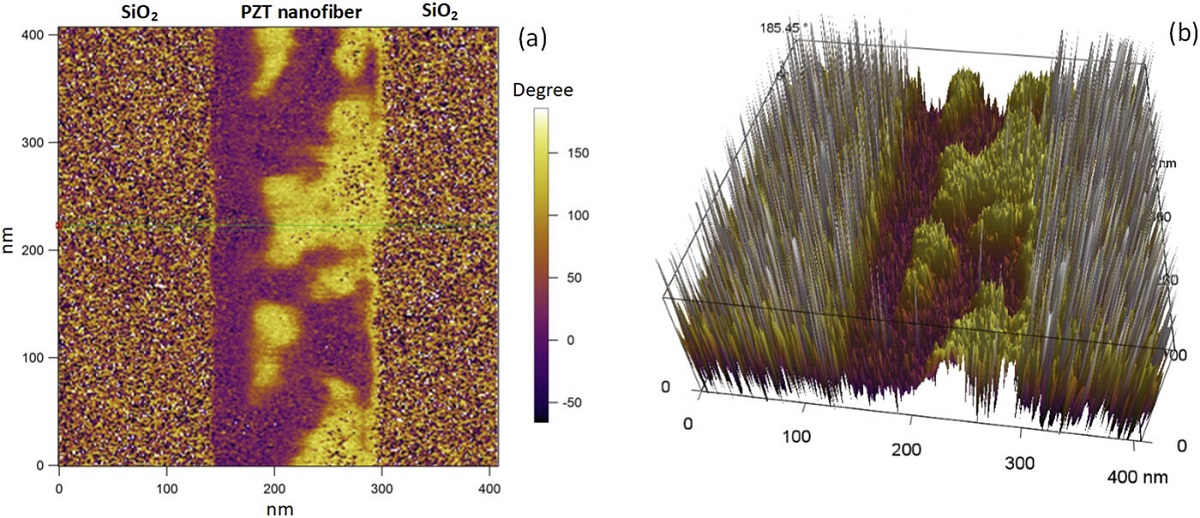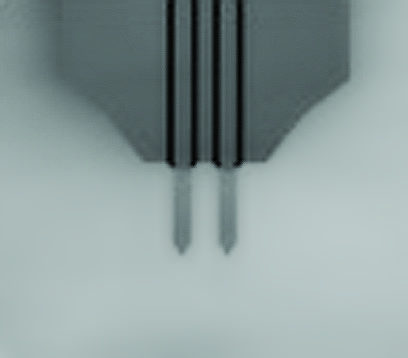We wish everyone a good start into the new lunar year of the rabbit!

Nano-piezoelectric materials such as 1D piezoelectric nanofibers, nanowires, and nanobelts have attracted a lot of research interest in recent years. *
Because of their active property that can transform strain energy into electricity, 1D piezoelectric nano-materials can be building blocks for nano-generators, strain sensors, acoustic sensors, force sensors, biosensors, self-powered drug delivery systems, piezoelectric transistors and other intelligent systems. *
The most important property of these active materials is their ability to convert mechanical energy into electrical energy and vice versa. *
Therefore, researchers started developing nano-sized piezoelectric materials in hope of achieving better piezoelectric properties. *
The characterization of these piezoelectric properties, especially measuring the piezoelectric strain coefficients, remains a challenge. *
The Atomic Force Microscopy (AFM)-based method to directly measure nano-materials’ piezoelectric strain coefficients is widely used.
However, several factors such as the extremely small piezoelectric deformation, the influence from the parasitic electrostatic force, and the environmental noise can make the measurement results questionable. *
In the article “Piezoelectric property of PZT nanofibers characterized by resonant piezo-force microscopy” Guitao Zhang, Xi Chen, Weihe Xu, Wei-Dong Yao, and Yong Shi address these issues by introducing a resonant piezo-force microscopy method and describing how it was used to accurately measure the piezoelectric deformation from 1D piezoelectric nanofibers. *
During the measurement the AFM tip was brought into contact with the piezoelectric sample and set to work close to the AFM tip’s first resonant frequency. *
The AFM probe used in this test was a platinum iridium coated NanoWorld Arrow-CONTPt (typical force constant 0.2 N/m, typical resonant frequency 14 KHz. The PtIr coating makes the AFM tip conductive and at the same time enhances the laser reflection from the detector facing side of the AFM cantilever to the photodetector. *
A lock-in amplifier was used to pick up the sample’s deformation signal at the testing frequency. By using this technique, the piezoelectric strain constant d33 of the Lead Zirconate Titanate (PZT) nanofiber with a diameter of 76 nm was measured. The result showed that d33 of this PZT nanofiber was around 387 pm/V. Meanwhile, by tracking the piezoelectric deformation phase image, domain structures inside PZT nanofibers were identified. *


*Guitao Zhang, Xi Chen, Weihe Xu, Wei-Dong Yao and Yong Shi
Piezoelectric property of PZT nanofibers characterized by resonant piezo-force microscopy
AIP Advances 12, 035203 (2022)
DOI: https://doi.org/10.1063/5.0081109
The article “Piezoelectric property of PZT nanofibers characterized by resonant piezo-force microscopy” by Guitao Zhang, Xi Chen, Weihe Xu, Wei-Dong Yao and Yong Shi is licensed under a Creative Commons Attribution 4.0 International License, which permits use, sharing, adaptation, distribution and reproduction in any medium or format, as long as you give appropriate credit to the original author(s) and the source, provide a link to the Creative Commons license, and indicate if changes were made. The images or other third party material in this article are included in the article’s Creative Commons license, unless indicated otherwise in a credit line to the material. If material is not included in the article’s Creative Commons license and your intended use is not permitted by statutory regulation or exceeds the permitted use, you will need to obtain permission directly from the copyright holder. To view a copy of this license, visit https://creativecommons.org/licenses/by/4.0/.
High metastasis-associated in colon cancer 1 (MACC1) expression is associated with metastasis, tumor cell migration, and increased proliferation in colorectal cancer. Tumors with high MACC1 expression show a worse prognosis and higher invasion into neighboring structures. However, the mediation of the pro-migratory effects is still a matter of investigation.*
In their study “MACC1-Induced Collective Migration Is Promoted by Proliferation Rather Than Single Cell Biomechanics” Tim Hohmann, Urszula Hohmann, Mathias Dahlmann, Dennis Kobelt, Ulrike Stein and Faramarz Dehghani aim to elucidate the impact of single cell biomechanics and proliferation on MACC1-dependent migration.*
The authors found that MACC1 expression associated with increased collective migration, caused by increased proliferation, and no changes in single cell biomechanics. Thus, targeting proliferation in high-MACC1-expressing tumors may offer additional effects on cell migration.*
The mechanical properties of single cells were assessed in the form of the Young’s modulus and cortex tension; both were measured using atomic force microscopy. Briefly, cells were seeded on a petri dish and measured 15 min after seeding to avoid slippage of individual cells. Measurements were conducted using a tipless NanoWorld Arrow-TL2 AFM cantilever array to apply a force of 1 nN that led to deformations of 1–2 µm. The Young’s modulus was calculated using the Hertz model.*


*Tim Hohmann, Urszula Hohmann, Mathias Dahlmann, Dennis Kobelt, Ulrike Stein and Faramarz Dehghani
MACC1-Induced Collective Migration Is Promoted by Proliferation Rather Than Single Cell Biomechanics
Cancers 2022, 14(12), 2857
DOI: https://doi.org/10.3390/cancers14122857
Open Access
The article “MACC1-Induced Collective Migration Is Promoted by Proliferation Rather Than Single Cell Biomechanics” by Tim Hohmann, Urszula Hohmann, Mathias Dahlmann, Dennis Kobelt, Ulrike Stein and Faramarz Dehghani is licensed under a Creative Commons Attribution 4.0 International License, which permits use, sharing, adaptation, distribution and reproduction in any medium or format, as long as you give appropriate credit to the original author(s) and the source, provide a link to the Creative Commons license, and indicate if changes were made. The images or other third party material in this article are included in the article’s Creative Commons license, unless indicated otherwise in a credit line to the material. If material is not included in the article’s Creative Commons license and your intended use is not permitted by statutory regulation or exceeds the permitted use, you will need to obtain permission directly from the copyright holder. To view a copy of this license, visit https://creativecommons.org/licenses/by/4.0/.